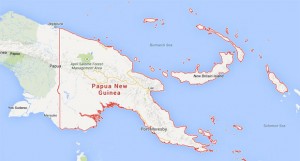
The quake struck 133 kilometers (83 miles) south-southwest of the town of Kokopo in the New Britain region at a depth of 63 kilometers, the US Geological Survey said, and was followed by a 5.9 magnitude aftershock.
The Pacific Tsunami Warning Center said “hazardous tsunami waves are possible for coasts located within 300 kilometers of the earthquake epicenter”.
“Certainly there’s a potential for a local tsunami in the area,” Geoscience Australia senior seismologist Jonathan Bathgate told AFP, but it would not impact on neighboring Australia or New Zealand.
Last week, a 6.8 earthquake hit off Kokopo, with a population of 20,000, after a 6.7 tremor struck off the same area on Thursday. There was no reported damage.
READ: Magnitude-7.9 quake hits Nepal; heavy damage
READ: Strong earthquake rocks New Zealand
Bathgate said the region had been very active over the past few months, noting that a 7.7 magnitude earthquake occurred on March 30, generating a local tsunami.
Again, there was no major damage reported after that quake, which took place in a mostly uninhabited region off the island of New Britain.
“We don’t anticipate a particularly disastrous impact,” geophysicist at the Pacific Tsunami Warning Center Barry Hirshorn told Sky News of Tuesday’s quake.
Hirshorn said the best estimate based on initial readings was a wave of about “a metre or so”.
“We can’t predict earthquakes but this area is in a very active sequence. This could be the biggest earthquake that’s been building up over the last few months, but there could be another larger earthquake,” Bathgate added.
“We now could endure a series of aftershocks… but it doesn’t rule out the potential for a larger earthquake.”
New Britain, the largest island of the Bismarck Archipelago, is east of mainland New Guinea and has a population of around 500,000 people.
The island lies on the 4,000-kilometre-long Pacific Australia plate, which forms part of the “Ring of Fire”, a hotspot for seismic activity due to friction between tectonic plates.